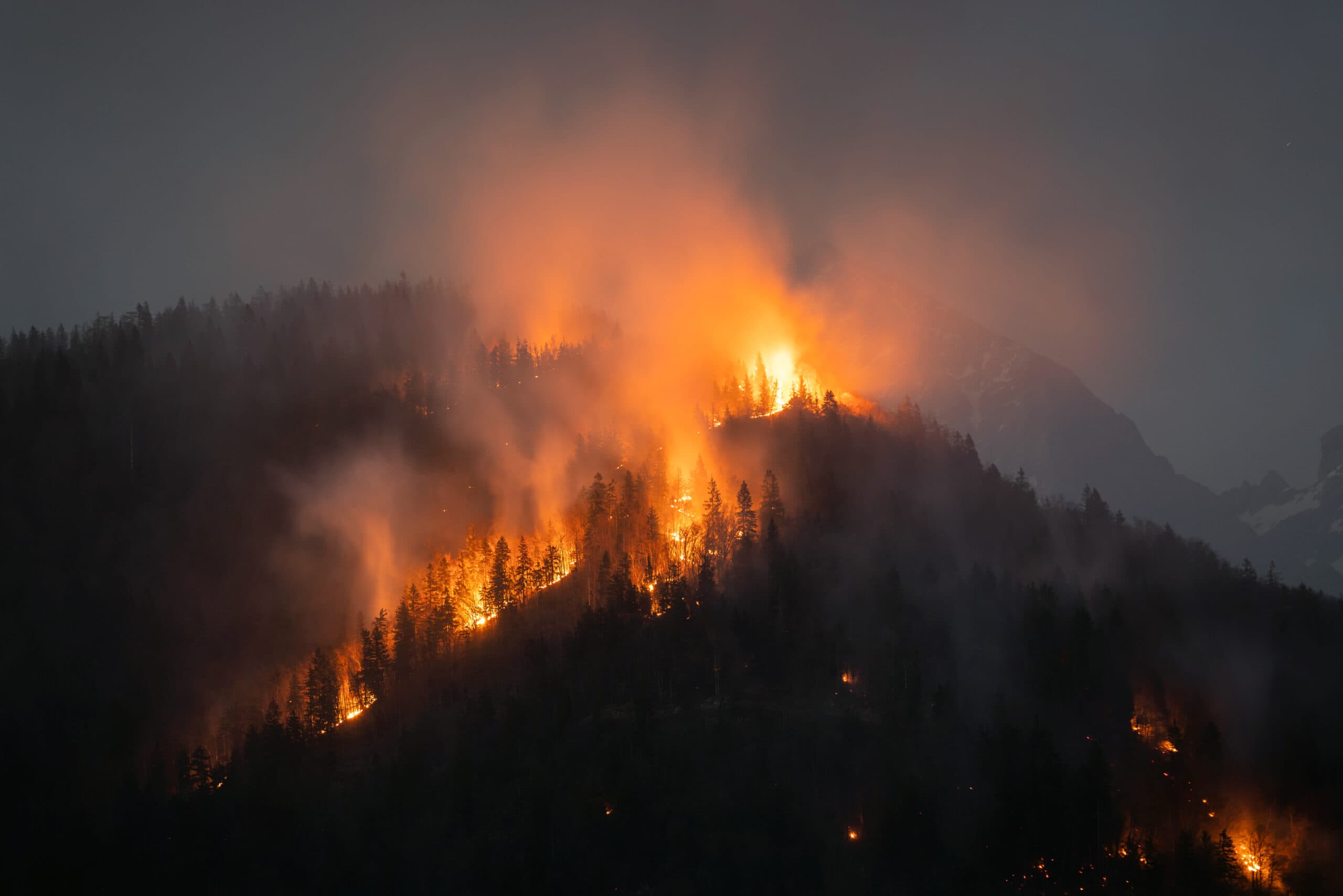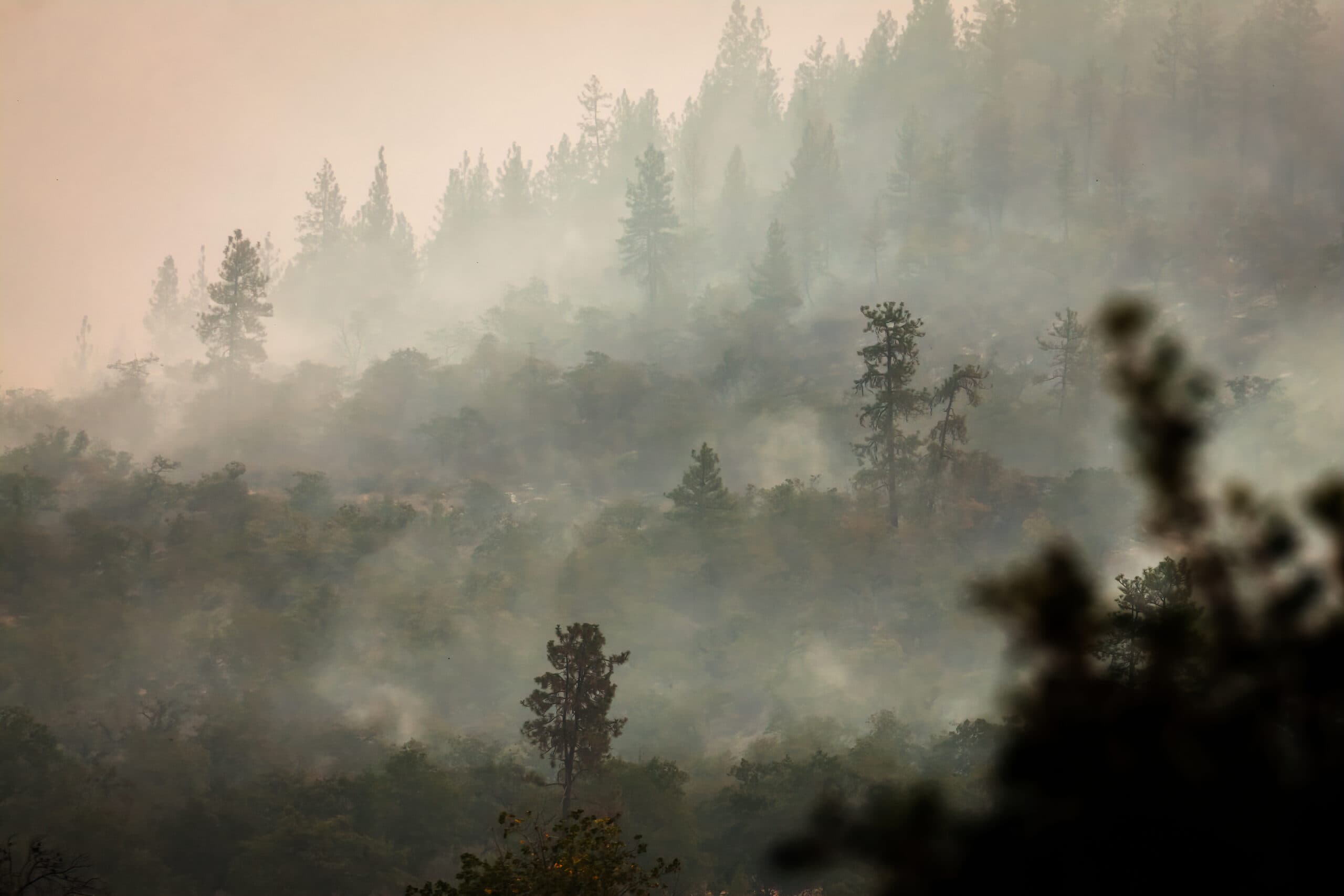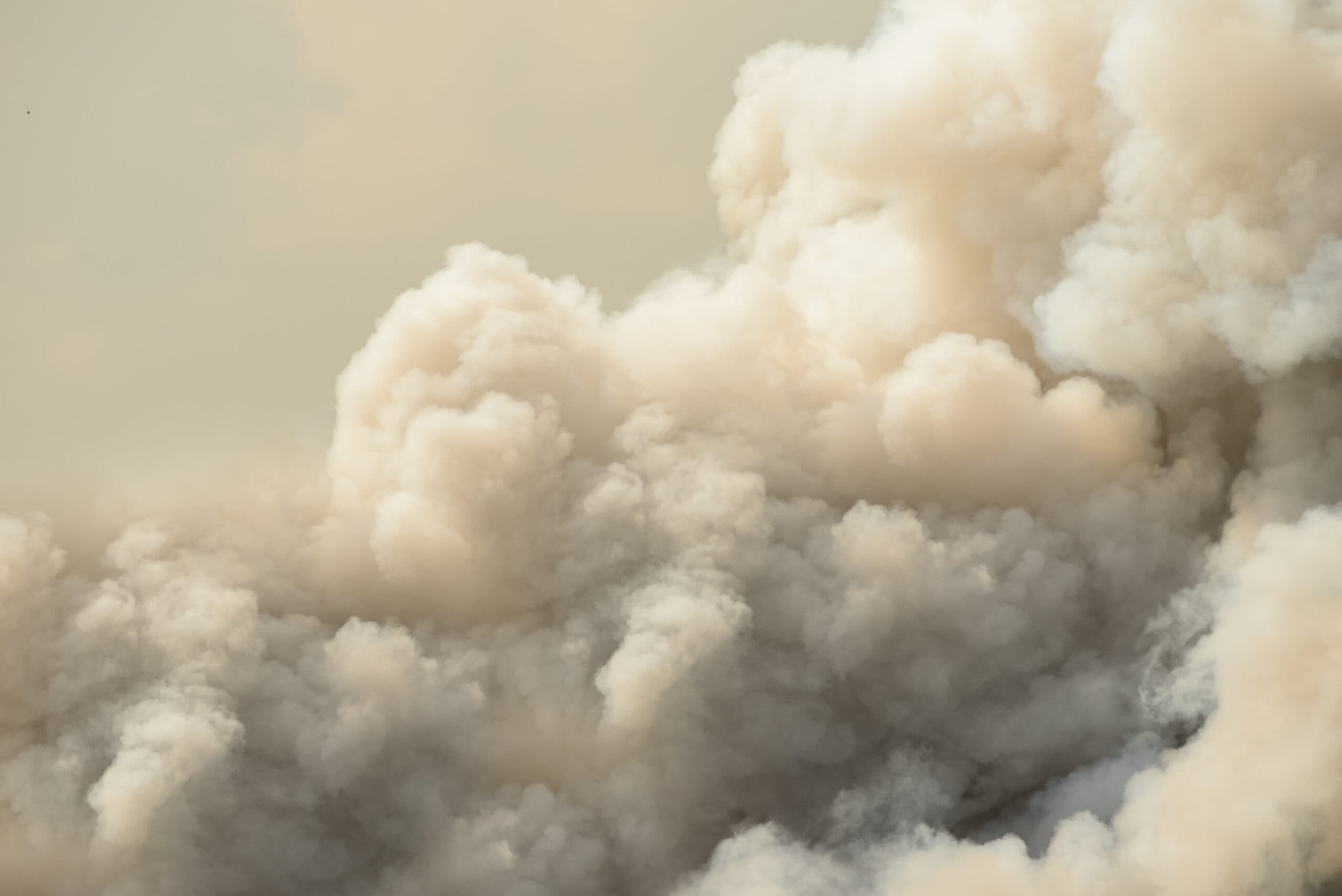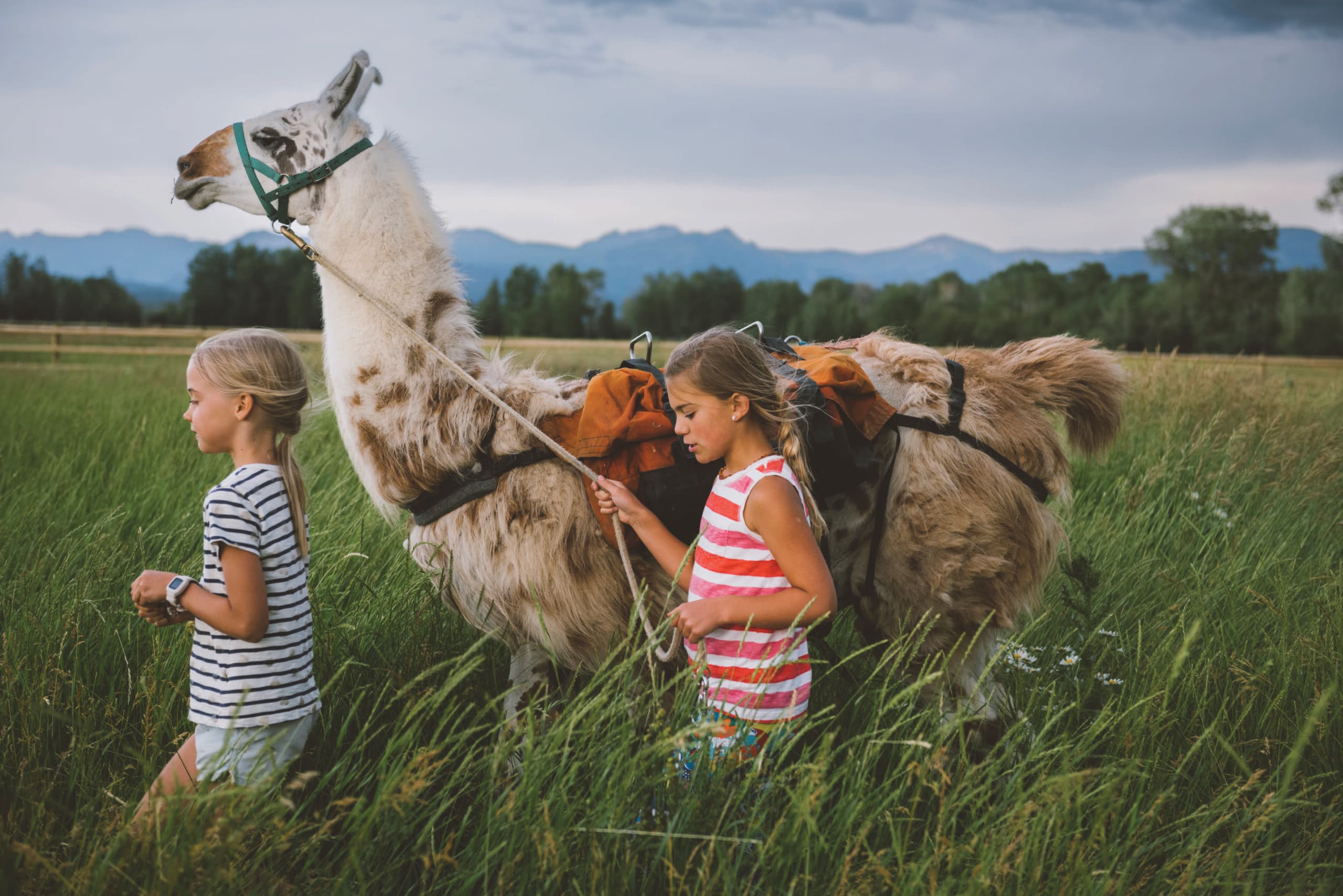Smoke Season

Navigating the inhales and exhales of unpredictable summer air quality
When a thick layer of wildfire smoke settles in Teton Valley, it obscures mountain views, leaving a haze. Sometimes, the smoke is thick enough to taste and feels gritty on the tongue.
It can leave people coughing, with aching lungs and itchy eyes, among other symptoms. The smoke can come from nearby, but more often, it blows into the valley from fires hundreds of miles away.
The smoke we see in Teton Valley is dependent on large-scale wind patterns, as well as on the weather. Paul Corrigan, the Intermountain Region Smoke Coordinator for the U.S. Forest Service, works to analyze the air-quality impacts of fires, using technology to observe, forecast, and mitigate smoke impacts.
When forecasting smoke, Paul needs to know how much smoke he thinks will likely be produced from a fire based on several factors, such as the available fuels, precipitation, winds, and humidity, as well as the likelihood of containment or explosive growth. He uses heat detection satellites to help learn how hot a fire is burning. He also needs to be able to interpret models and know how the wind patterns are likely to carry the smoke over the course of the coming days.
“It’s challenging because we’re working in a really dynamic system,” Paul says. “That’s the hardest part about forecasting smoke. You do not just need really good weather forecasts, you also need to use your best judgment or prediction of what’s going to happen with wildfire growth.”
In Teton Valley, the smoke season can vary greatly, with some years like summer 2023 light on smoke, while other years leave the valley socked in for longer periods of time. “We’re having longer fire seasons … and we’re seeing an increase in smoke because we’re having those longer fire seasons,” says Jay Pence, District Ranger for the Driggs-based Teton Basin Ranger District of the Caribou-Targhee National Forest.
And the fire season effects stretch far beyond our region. Smoke can travel thousands of miles with the winds, and smoke in Teton Valley can come from California, Oregon, Washington, Canada, and beyond. When it arrives in Teton Valley, local conditions can trap it in the area longer.
“If there’s an inversion layer of warmer air up above the surface, that can act like a lid and just keep the smoke in the valley for a month,” says Bruce Mason, weather blogger for Teton Valley News. Bruce has lived in Teton Valley for more than eighteen years. The unofficial weatherman for the area, he runs the popular Teton Valley Weather Facebook page and keeps everyone abreast of everything from winter storms to potential poor air quality. He says in 2016, the Tie Canyon Fire by Pine Creek Pass created the thickest smoke he’s seen in the valley. “It looked like a thick fog as it rolled in,” he says.

Forest wildfire at night a natural disaster

Wild fires near highway 62 in Eagle Point Oregon, September 9 2020

PM2.5 – measuring indoor air quality and air purifier effectiveness. Dust free area for health.

Dense white smoke rising from the raging wildfire,close up swirling white smoke background.
Whether the smoke comes from near or far, it can be hazardous to breathe in. “Depending on exactly what’s burning, the smoke can contain a lot of different particulates, a lot of different chemicals—and they’re not good for you,” Bruce says.
The Air Quality Index (AQI) is used by the U.S. Environmental Protection Agency to report air quality. It ranges from zero to 500, with lower numbers reflecting better air quality. A color scale accompanies the numbers, ranging from “green” good air to “maroon” hazardous air quality.
When the AQI is below fifty, it is considered “good” air, indicated with green. The 51 to 100 range is “moderate” (yellow), while 101 to 150 is orange and “unhealthy for sensitive groups.” Red indicates the 151 to 200 range, which is considered unhealthy for everyone, followed by the “very unhealthy” purple range from 201 to 300. “Hazardous” is the highest range (301+) with maroon indicating a “health warning of emergency conditions.”
According to the Centers for Disease Control and Prevention (CDC), wildfire smoke can be harmful to anyone, but is especially dangerous for people with a number of health conditions, including lung and heart issues, as well as the young, old, and pregnant.
“I do think it is important to talk to your medical provider if you are a sensitive person, and to just make sure you follow their direction,” Jay Pence says.
The CDC urges individuals to prepare for fire season by planning evacuation routes and gathering supplies for emergencies, including National Institute for Occupational Safety and Health (NIOSH)-approved respirators to help filter out smoke and particulates. People can also take action to improve indoor air quality. EPA recommendations include taking measures to clean or filter indoor air, as well as to avoid contributing to additional indoor air pollution by avoiding things like burning candles.
“It’s important that we recognize that people need to go outside, whether their job requires it, or you need to walk the dog, or you need exercise yourself,” Paul says. “So, trying to find those times of day when the air quality is better is a great option. You certainly can limit your intake of air pollution by wearing an N95 respirator mask.”
Since so many fires are human-caused, Bruce also points out one way we
can all work together to reduce the impact of smoke season. “The main thing, I think, is to just be really careful and responsible with fire during fire season, and that’ll solve many problems.” he says.
“Listen to Smokey Bear.”
Be Smoke Aware
Since the Air Quality Index (AQI) can change quickly, it’s vital to know how to check the air-quality conditions. “Air quality can change rapidly even over the course of a few short hours or even minutes,” says Paul Corrigan, Intermountain Region Smoke Coordinator for the U.S. Forest Service.
While a quick glance can tell you if there’s heavy smoke in the air, several websites provide far more detailed information.
A great source for all air-quality information is:
For a real time fire and smoke map,
check out:
• If you smell smoke or see smoke, consider restricting your outdoor activities.
• Smoke effects increase substantially with strenuous or prolonged activity outdoors.
• Keep in mind that air quality can change rapidly at different times during the day due to wind shifts. It is important to monitor the smoke throughout the day in your area and make plans for outdoor activities accordingly.
• Many weather apps also include air-quality information.




